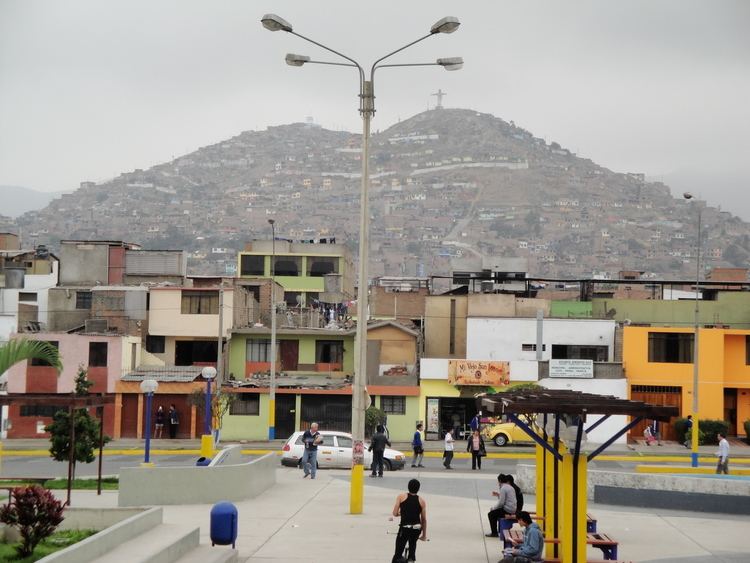Founded January 12, 1965 Elevation 141 m (463 ft) Area 23.98 km² | Subdivisions 1 populated center Time zone PET (UTC-5) | |
 | ||
Neighborhoods San Antonio De padua, Martin De San Juan Points of interest Play land park, Tropicana, Columbios Park, Parque ‑ Santiago de Surco | ||
San Juan de Miraflores is a district of the Lima Province in Peru. It is located in the Cono Sur area of the city of Lima.
Contents
- Map of San Juan de Miraflores Peru
- San juan de miraflores barras bravas se enfrentan con palos
- Geography
- Boundaries
- Demographics
- References
Map of San Juan de Miraflores, Peru
Officially established as a district on January 12, 1965, the current mayor (alcalde) of San Juan de Miraflores is Javier Altamitano. The district's postal code is 29.
San Juan de Miraflores is one of the pueblos nuevos, or new towns, that have been formed by the massive numbers of people moving from other towns of Metropolitan Lima (such as Miraflores, Surquillo, La Victoria, among others) and from the countryside. During the early 1960s, SJM was mostly a desert area.
SJM is divided into zones ("A", "B", "C", "D", "E" and "K"). In the early 80's, people from Cuzco, Ayacucho, Pasco, and many of the other departments that were under the attack of terrorists chose SJM and Villa El Salvador as their new home. As new residents were coming into SJM, two new zones were created: Pamplona Alta and Pamplona Baja. This name was taken in honor of some of the Spanish missionaries (who were from Pamplona, Spain) who offered their help to the residents. One of Pamplona Alta's mains streets, "Pista Nueva" or "New Street", is an example of how new the area is. When it was first settled, many people lived without electricity, water or plumbing, often building their houses from reed mats into the steep hills, with treacherous paths leading to the houses at the top. As residents could afford building materials, they would begin to reinforce these reed mats with plywood, bricks, or whatever else they could find.
Today the houses are a hodgepodge of building materials, most in a state of continual construction as residents can afford each additional brick. Most have access to electricity, but many still lack running water or plumbing. In just the last couple of years the mayor of Lima has launched an extremely successful program to build concrete staircases, or "escapers", into the hillsides, replacing the treacherous paths and dramatically improving the living conditions of residents. These staircases are distinctively painted yellow, with bright blue signs, and neighborhood residents are hired by the city to build them.
In addition to these new zones, 2 more were created. By the year 1981, America and Umamarca were created. Usually, these new zones are well known because of its highly interest of being better every day, since most of the owners are the people who worked most of their lives (and still do) in Ciudad de Dios' Market. These areas were urbanized quickly.
By 1983 and 1984, two new more zones had been created - Maria Auxiliadora and Amauta ("teacher" in English), located between zones "A" and "B". One of the main streets of Maria Auxiliadora is Pedro Miotta, which was well known as the former Panamericana Sur freeway.
Within Lima, particularly in public transportation terms, "San Juan" generally refers to San Juan de Miraflores; San Juan de Lurigancho, which is north of the Rímac River and is of larger size, is denoted by its individual sections, such as Zárate, Campoy, Mangomarca, Canto Grande, etc.
San juan de miraflores barras bravas se enfrentan con palos
Geography
The district has a total land area of 23.98 km². Its administrative center is located 141 meters above sea level.
Boundaries
Demographics
According to the 2005 census by the INEI, the district has 335,237 inhabitants, a population density of 13,979.9 persons/km² and 71,384 households.
